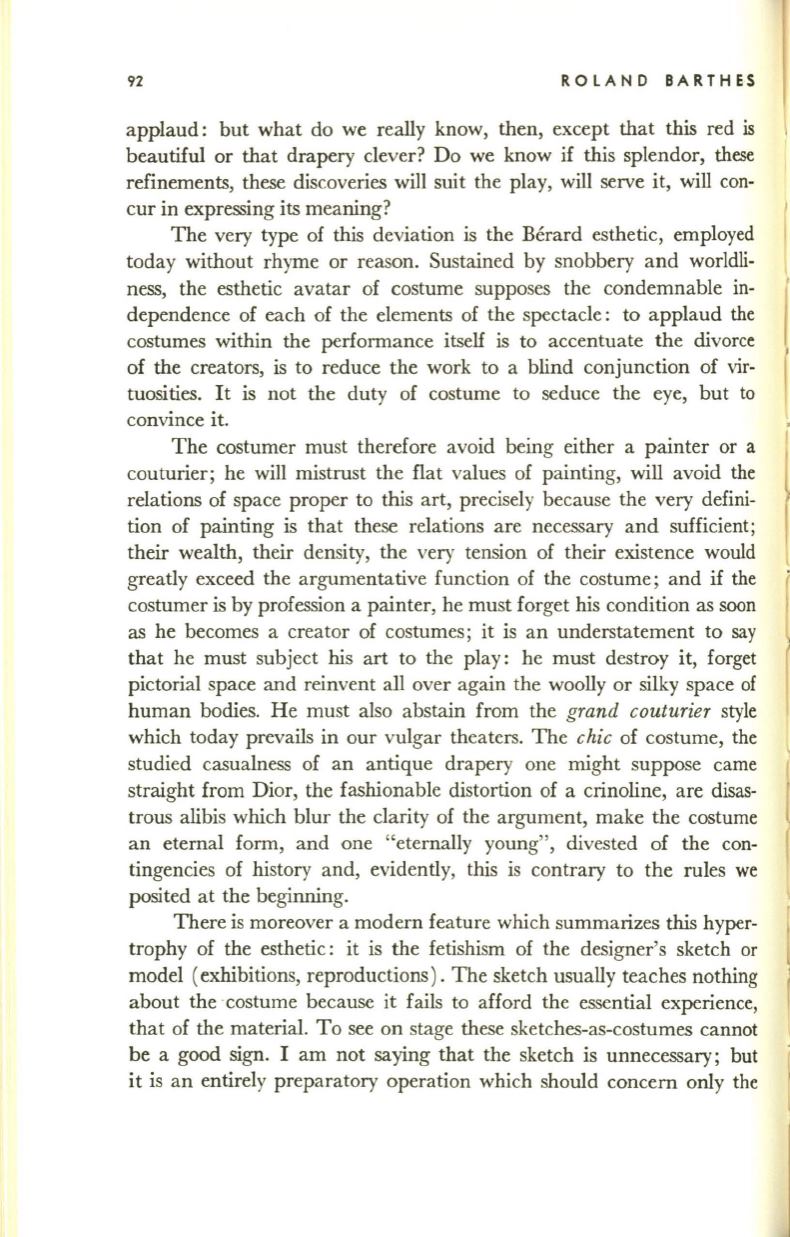
92
ROLAND BARTHES
applaud: but what do we really know, then, except that
this
red
is
beautiful or that drapery clever? Do we know if this splendor, these
refinements, these discoveries will suit the play, will serve it, will con–
cur in expressing its meaning?
The very type of this deviation is the Berard esthetic, employed
today without rhyme or reason. Sustained by snobbery and worldli–
ness, the esthetic avatar of costume supposes the condemnable in–
dependence of each of the elements of the spectacle: to applaud the
costumes within the performance itself is to accentuate the divorce
of the creators, is to reduce the work to a blind conjunction of vir–
tuosities. It is not the duty of costume to seduce the eye, but to
convince it.
The costumer must therefore avoid being either a painter or a
couturier; he will mistrust the flat values of painting, will avoid the
relations of space proper to this art, precisely because the very defini–
tion of painting is that these relations are necessary and sufficient;
their wealth, their density, the very tension of their existence would
greatly exceed the argumentative function of the costume; and if the
costumer
is
by profession a painter, he must forget his condition as soon
as he becomes a creator of costumes; it is an understatement to
say
that he must subject his art to the play: he must destroy it, forget
pictorial space and reinvent allover again the woolly or silky space of
human bodies. He must also abstain from the
grand couturier
style
which today prevails in our vulgar theaters. The
chic
of costume, the
studied casualness of an antique drapery one might suppose came
straight from Dior, the fashionable distortion of a crinoline, are disas–
trous alibis which blur the clarity of the argument, make the costume
an eternal form, and one "eternally young", divested of the con–
tingencies of history and, evidently, this is contrary to the rules we
posited at the beginning.
There is moreover a modern feature which summarizes this hyper–
trophy of the esthetic: it is the fetishism of the designer's sketch or
model (exhibitions, reproductions). The sketch usually teaches nothing
about the .costume because it fails to afford the essential experience,
that of the material. To see on stage these sketches-as-costumes cannot
be a good sign. I am not saying that the sketch is unnecessary; but
it is an entirely preparatory operation which should concern only the


